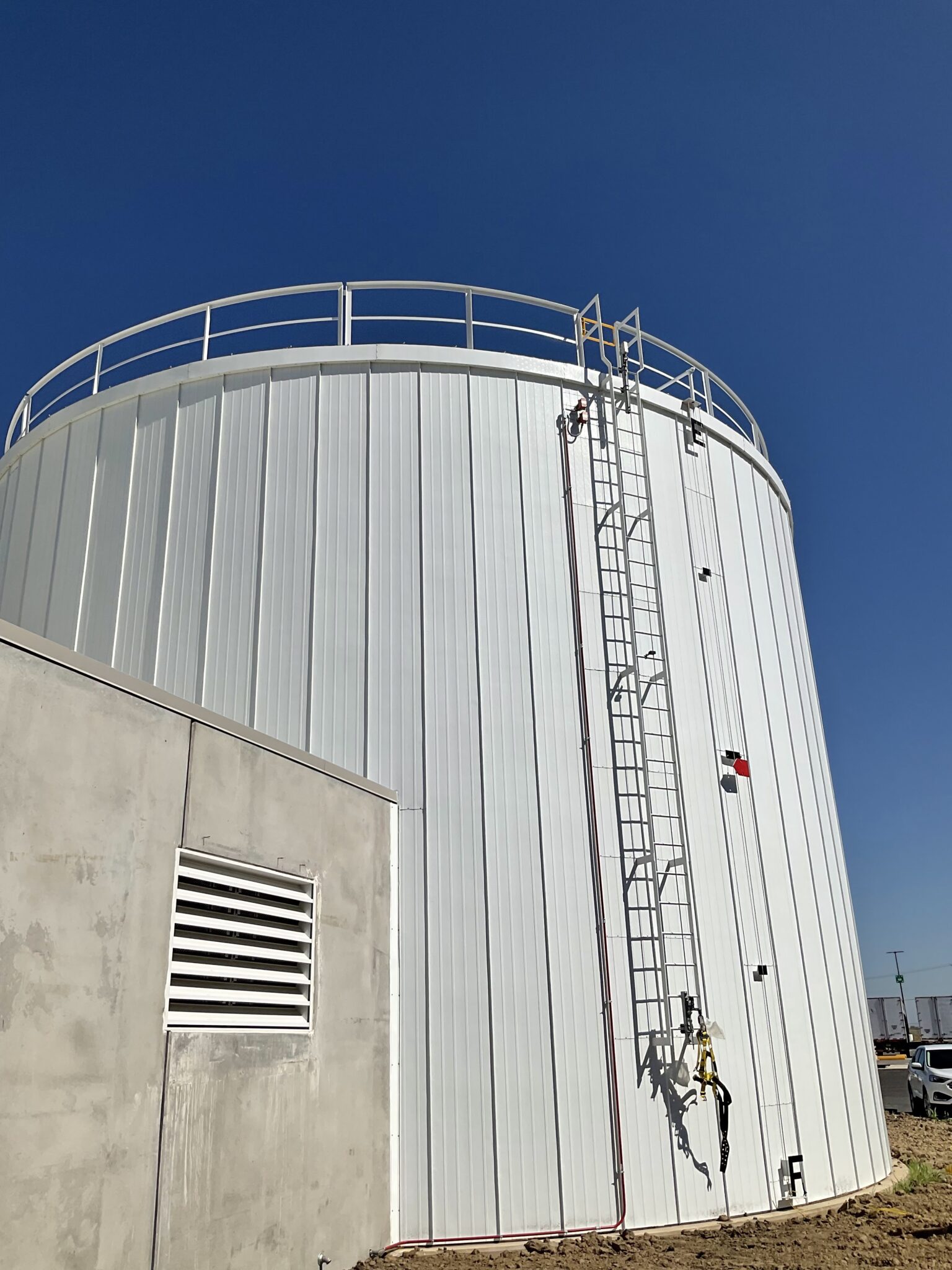

A fire water storage tank is a critical component of any facility’s fire protection system. It provides water in the event of a fire emergency, making it an essential safeguard for life and property. However, ensuring that it is installed in accordance with code requirements can be challenging, with numerous crucial elements often overlooked during the planning and building phases. Here are five common misses that can occur when installing a ground fire water storage tank:
- Foundation Elevation: One of the most common oversights in fire water storage tank installations is neglecting the foundation’s elevation. Regulations stipulate that the tank’s foundation should be six inches taller than the surrounding grade. This not only prevents ground water intrusion beneath the tank, but also mitigates corrosion & premature failure risks. Coordinating this requirement with the project’s Civil Engineer during the design phase is crucial, as correcting it once the tank is in place can be challenging and costly.
- OSHA Compliance: Essential safety features, including confined entry signage on each manway, a safe climbing device on the ladder, and a full 360-degree handrail with an entry gate, should not be ignored. It’s imperative to consider these factors when specifying the tank’s features to ensure compliance with safety regulations.
- Heater Wiring: The wiring of the heater is often misunderstood & underestimated. Providing a clear wiring diagram indicating the 120v control wiring from the thermocouple to the heater controller is essential. This should be coordinated with the project’s Electrical Engineer during the design phase to avoid complications & misinterpretations.
- Water Level Maintenance: While a manual fill valve may be deemed acceptable for a full-duration water tank, an automatic fill valve can simplify tank maintenance. However, most altitude valves may not be sensitive enough to maintain the water level within four inches of the normal water level, as required. Discovering this issue after installation can be problematic. Consider a solenoid-controlled flow control valve, like an altitude valve but with different trim configurations, for better water level management.
- Proper Grounding: Those seemingly inconspicuous tabs on the side of the tank play a vital role in securing the grounding cables required by NFPA 780, Standard for the Installation of Lightning Protection. Failing to coordinate this requirement upfront can lead to legitimate requests for change orders from electricians. Ensuring proper grounding is essential for the safety & integrity of the tank.
The proper design & construction of a ground fire water storage tank is vital for the fire safety of any such equipped facility. To avoid costly & time-consuming issues during construction, “Think Upstream” by proactively coordinating with other project professionals during the design and in the early construction phases.

